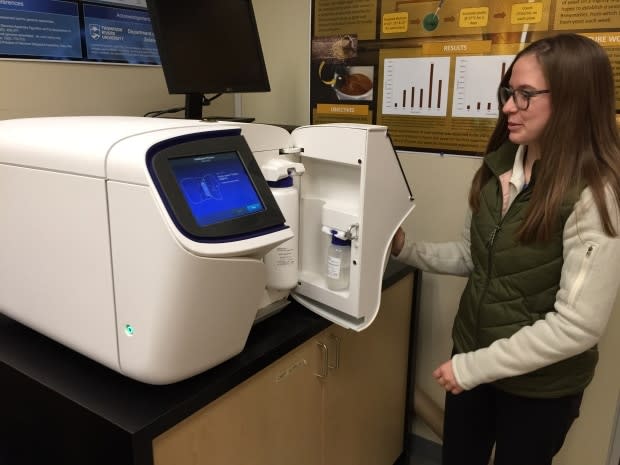Researchers study yeast genomes to uncover new ways of brewing
A Thompson Rivers University professor has teamed up with Vancouver's Parallel 49 brewery to study one of their most popular but hard-to-create beers.
Jonathan Van Hamme and his team are using the microbiology research lab at TRU in Kamloops to sequence the genomes (the complete genetic information) of the yeast strains in the Belgian ale the company markets as Wild Ride.
The beer is distinctive because it uses two yeast strains, instead of the typical one strain.
"[Parallel 49] is really wanting to understand how the two yeasts interact metabolically ... what compounds they share and how they interact genetically," Van Hamme told Daybreak Kamloops' Jenifer Norwell.
"A long time down the road, I think they'd be interested in having some way of having a single yeast do the fermentation and still give the same characteristics [of two yeasts]."
Wild Ride was brewed using both Saccharomyces cerevisiae yeast and Brettanomyces yeast.
"Using these two yeasts, it can get pretty complicated. But that's a whole new range of flavours," said Breanne McAmmond, a research assistant on the project.

"It allows the yeast to interact together and produce flavours in the beer that otherwise wouldn't come about from just one of the two yeasts on their own."
However, having two yeasts in a brew is a challenging process — so much so that Parallel 49 has put a hold on brewing Wild Ride.
"Basically you can predict easily when yeast is going to act in a situation. But when you add in the second variable, there's two players in the game. And sometimes they butt heads, and sometimes the beer just won't turn out. So time-wise, it's very expensive," McAmmond said.
Science behind beer
Van Hamme's project is supported by a research grant from Natural Sciences and Engineering Research Council of Canada. The TRU team studies yeast samples by removing them from the fermentation process.
Through experimentation, Van Hamme found that Saccharomyces cerevisiae yeast ferment rapidly, whereas Brettanomyces yeast takes time to catch up, sometimes needing a week to ferment.

Van Hamme and his team can look inside the yeasts' genomes and figure out specific flavour compounds each one produces.
"And if we can maybe adjust the conditions for them, perhaps we can eliminate one of the yeasts from the Wild Ride brew by encouraging different genes in one of the species to turn on."
McAmmond says many microbreweries are looking to get ahead of the competition by using unique brewing methods.
"It could be a marketing tool ... producing flavours that otherwise you couldn't get previous to this research. And with the growing beer culture in B.C., there's especially people who want cool, funky beers," McAmmond said.


